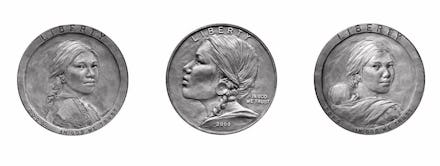We Should Replace Andrew Jackson on the $20 Bill With One of These Women

In the history of the Treasury Department, the United States government has printed money ranging in denominations from one cent to $100,000, featuring portraits of a wide cast of characters. Some, like Presidents George Washington and Abraham Lincoln, made great contributions to American society; others, like Salmon P. Chase and Grover Cleveland, were a bit more forgettable. Now one group is looking to draw our eyes to an entirely different kind of greenback portrait.
Women on 20s has a simple goal: to oust America's seventh president, Andrew Jackson, from his current place on the $20 bill. According to its website, the group aims to "generate an overwhelming people's mandate for a new $20 bill, to be issued in time for the 100th anniversary in 2020 of the Constitutional amendment giving women the right to vote." Old Hickory has been on the $20 bill since 1928; the group is hoping to replace him with one of 15 women and has invited the public to vote for their favorites candidates.
The case against Jackson is pretty strong. In 1830, Jackson signed the Indian Removal Act, which forced Native American tribes from their ancestral homelands into new territories west of the Mississippi River. The Cherokee Nation brought suit against Jackson a year later; Chief Justice John Marshall ultimately declared that "the Cherokee nation, then, is a distinct community occupying its own territory."
Nevertheless, Jackson, and his successor Martin van Buren, ultimately moved to evict the Cherokee to present-day Oklahoma. The route took the form of a brutal death march during which an estimated 4,000 Cherokee are said to have perished from cold, disease and starvation.
The president didn't merely own slaves, but actively worked as a trader, buying and selling slaves for profit. He also had a history of personal violence, and has the dubious distinction of being the only president to kill a man in a duel. (The crime was insulting his bigamist wife, if you were wondering.) "Reforms" instituted under Jackson paved the way for the infamous "Spoils System" that allowed friends and political supporters to dominate the American government over more qualified candidates. Jackson was also a populist demagogue whose own inauguration party in 1829 resulted in mobs storming the White House and damaging thousands of dollars in property. In his own time, he was known as "King Mob."
Finally, believe it or not, Jackson probably would be horrified to see his own face on a banknote. After all, every bill American currency that ever passed through your fingers has (in addition to being bathed in cocaine) been distributed by the United States Federal Reserve Bank, the predecessor to which Jackson vehemently opposed. Jackson was a firm believer in gold-backed currency over paper money. If he were alive today, you'd likely find him among the Ron Paul groupies, denouncing America's "fiat" money (i.e. currency backed by public trust and not convertible to gold or silver).
Regardless of your views on Jackson, nobody can deny that our money, dominated by dead white men, feels increasingly out of place in an America that becomes more diverse every year. So what esteemed dead woman might fit the bill? Here are some possibilities:
Harriet Tubman
After escaping slavery herself, Tubman made a career ferrying others to freedom along the famed "Underground Railroad." For a time, she was among the most wanted women in the South, and her efforts helped hundreds of escaped slaves reach safety before the Civil War.
Eleanor Roosevelt
Long before Claire Underwood, Franklin Roosevelt's trailblazing wife represented America in the United Nations. Not content to be a smile-and-wave First Lady, Roosevelt pushed civil and human rights at home and around the world. Her efforts continued long after her husband died in office in 1945.
Betty Friedan
Friedan's groundbreaking work, The Feminine Mystique, smashed the myth of contentment among American women in the 1950s, and set the stage for the feminist movement in the 1960s and beyond.
Bills, bills, bills. According to the U.S. Mint, only three women have ever appeared on circulating U.S. currency: Susan B. Anthony on the dollar coin in the late 1970s, Sacagawea on the dollar coin since 1999 and Helen Keller on the Alabama quarter in 2003. No woman has ever appeared on American paper currency in the 226-year-history of the Treasury Department, despite America's history being filled with accomplished pioneers of human rights, politics and feminism. Considering that 74.9% of women identify themselves as their household's primary shopper, maybe it's time to let the people who handle America's money see someone like them on it.